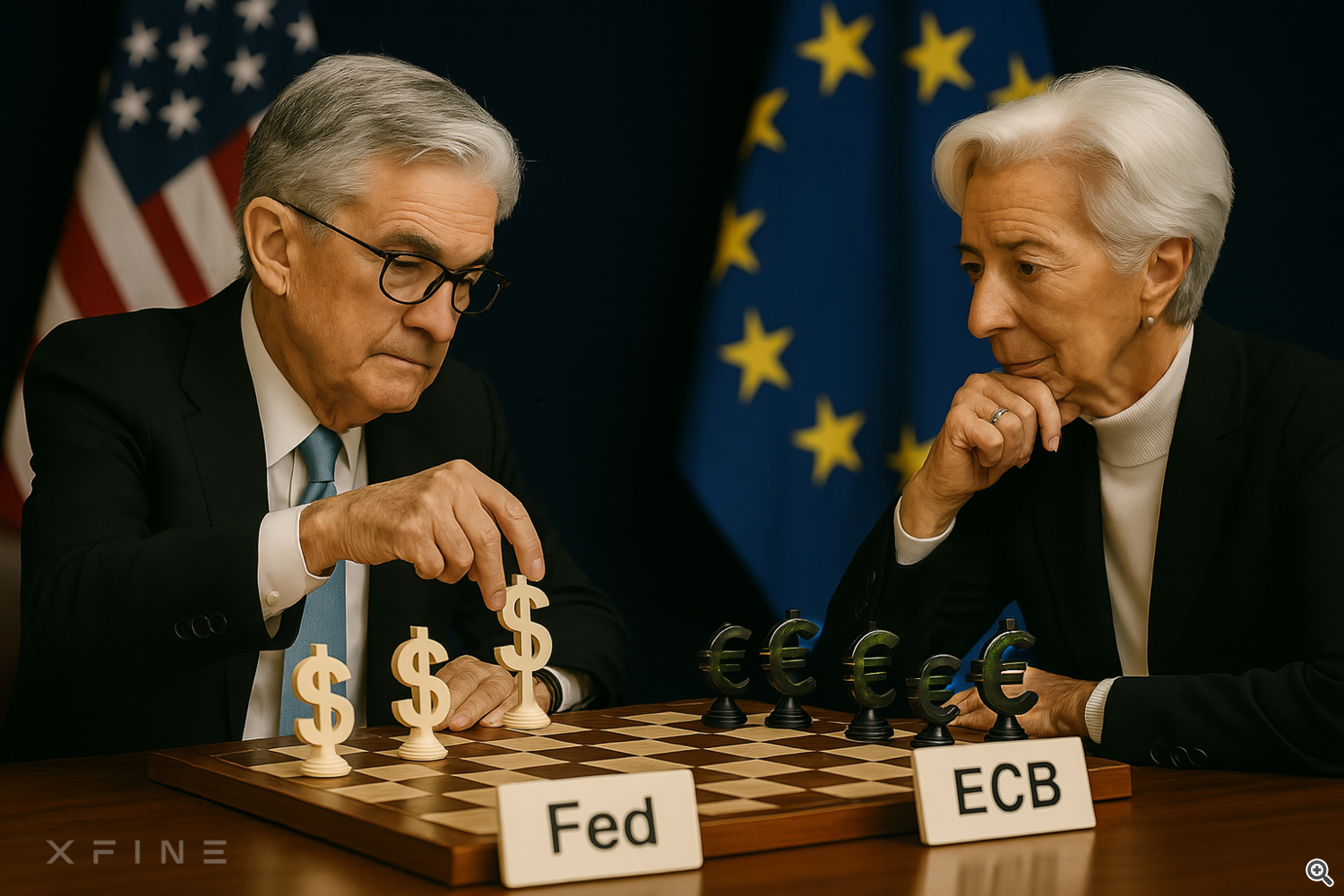By Saturday, 26 July, the US Dollar Index had slipped below the 98.00 mark, recording its sharpest weekly drop in a month. The decline followed improved sentiment surrounding trade negotiations with Japan and the European Union, which lifted stock markets and weakened demand for traditional safe-haven assets such as the dollar and gold. Investors are now focused on the upcoming Federal Reserve meeting, as well as key US macroeconomic data – Q2 GDP, the core PCE price index, and of course, employment figures. These indicators are likely to shape market sentiment in the final days of July and set the tone for early August.
💶 EUR/USD
The euro is holding relatively steady against the dollar, trading near 1.1740 after recovering from recent lows around 1.1560. On the first trading day of July, the pair briefly climbed to 1.1830 before pulling back and consolidating around 1.1755. Support is visible near 1.1700, followed by 1.1660. The pair’s further direction largely depends on the movement of the dollar index. A breakout above 98.65 could weigh on the euro, while renewed dollar weakness might lift EUR/USD back toward recent highs.
₿ BTC/USD
Bitcoin remains in a consolidation phase near the pivot point of $118,200, while maintaining significant volatility. The weekly range has been between $114,725 and $120,365. A failure to hold above $115,000 could intensify downside pressure. However, the fact that the pair is trading above $118,000 on Saturday, 26 July, suggests a potential return to a bullish trend. Institutional flows and market sentiment remain the primary drivers of price movement.
🛢️ Brent Crude
By the end of the trading week, Brent crude fell to $68.53 per barrel, trimming part of the gains seen earlier in July. While prices have risen about 2.5% since the end of June, they remain lower year-on-year, with last year closing at $74.53. This weakness is largely due to soft demand and concerns over oversupply. Forecasts for the coming month suggest a range between $65.80 and $70.50, with market participants closely watching OPEC+ decisions and geopolitical risks, particularly in the Middle East.
🥇 XAU/USD (Gold)
Gold ended the week around $3,337 per ounce, fully in line with our earlier forecasts of consolidation near $3,350. Immediate support is seen in the $3,300–$3,310 zone. If bulls fail to defend this area, a correction toward $3,285 and then $3,245 is possible. In case of renewed growth, the nearest resistance is expected around $3,370, followed by $3,300 and $3,245. The precious metals market remains highly sensitive to shifts in risk appetite and the outcome of the Fed meeting scheduled for midweek.
The week of 28 July to 1 August is expected to be highly tense, with the spotlight on the Federal Reserve meeting, the release of US data on GDP, inflation, and employment, as well as the fate of new tariffs that could come into effect as early as 1 August. The introduction of duties of up to 35% on goods from the EU, Canada, and Mexico could sharply escalate trade tensions and increase uncertainty across global markets. EUR/USD remains sensitive to dollar fluctuations, while Brent crude is vulnerable to risks of oversupply and weakening demand. Gold and bitcoin are both at risk of decline: if key support levels are breached, these assets could accelerate their fall amid end-of-month profit-taking and capital outflows from safe-haven and speculative instruments. Market sentiment in early August will largely depend on the interplay between geopolitics, macroeconomic data, and investor reactions to rising trade threats.




